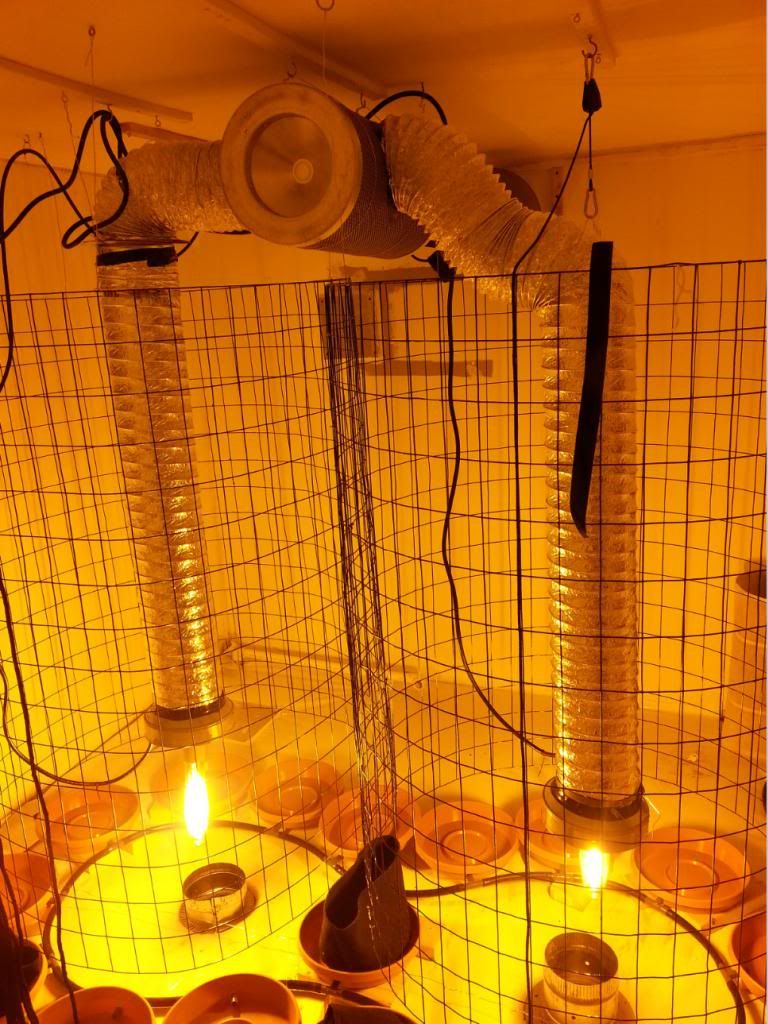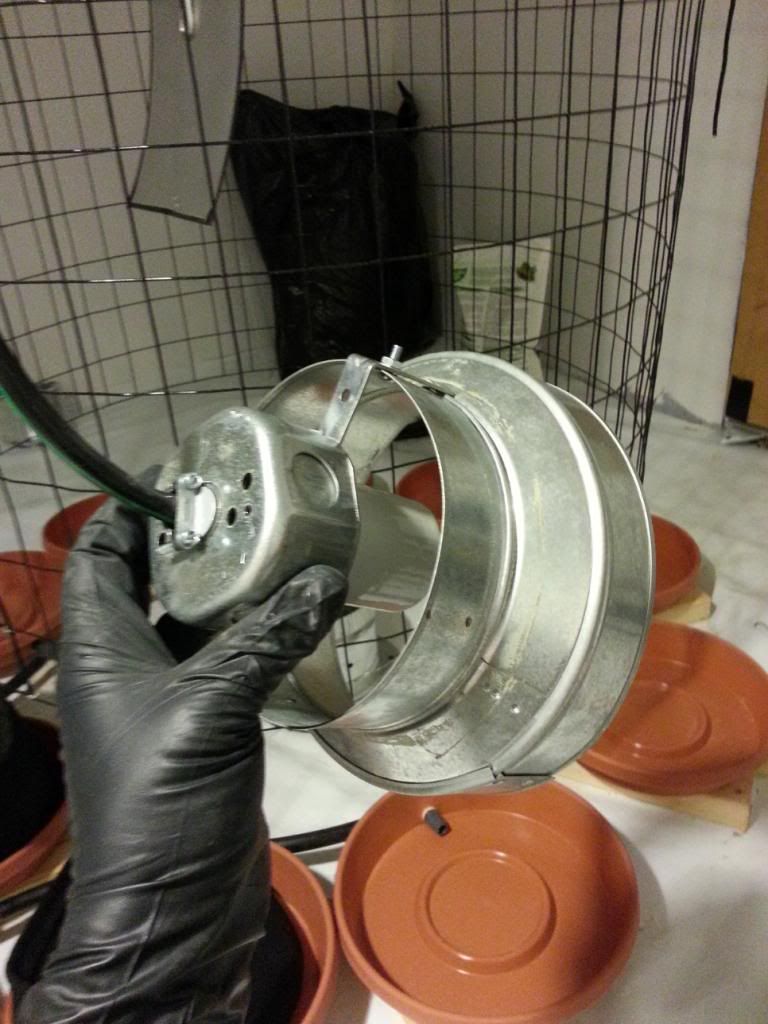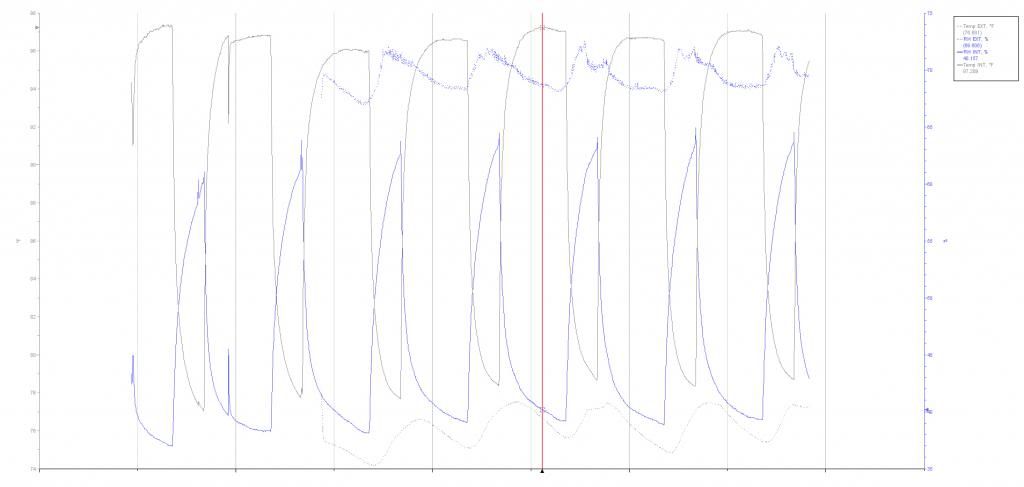So I am setting up a new Vert and I was thinking about creating intakes where the small Honeywell fans would go. In theory I believe this could possibly allow me to eliminate the fans and associated power draw, as well as the obstacle of having to route cords. I know the power draw is minimal but every little bit counts; it takes many 1s and 2s to make 10s, 20s and 100s!
I have 4 lights hanging in a 621'^3 space (9' x 11.5' x 6'h) with a 440cfm inline Vortex exhaust fan. By my calculations this should distribute ~60cfm to 4 x 4" holes.
I came by this number by taking the area of the 6" exhaust (28.3in²) against the combined area of 4 x 4" holes (50.3in²). Since the total area of the passive intakes is roughly 34% larger than the exhaust I took 56% of the exhaust fan rating/4.
I'm going to try it regardless but; I wondered if anyone had further thoughts on this idea?[FONT=Arial, Helvetica, sans-serif]"[/FONT]
I have 4 lights hanging in a 621'^3 space (9' x 11.5' x 6'h) with a 440cfm inline Vortex exhaust fan. By my calculations this should distribute ~60cfm to 4 x 4" holes.
I came by this number by taking the area of the 6" exhaust (28.3in²) against the combined area of 4 x 4" holes (50.3in²). Since the total area of the passive intakes is roughly 34% larger than the exhaust I took 56% of the exhaust fan rating/4.
I'm going to try it regardless but; I wondered if anyone had further thoughts on this idea?[FONT=Arial, Helvetica, sans-serif]"[/FONT]








